
When it comes to sports, New York is a baseball city. A paced game like baseball offers relief to a metropolitan area that can grind and aggress us at times. We have thirty-five championships in baseball alone. To put that in terms of bragging rights, that’s one more ring than Boston, the next championed city, has in the NFL, NBA, NHL, and MLB combined. Some of the game’s best players made their names among the bright lights and concrete. But funny enough, per capita, not many native New Yorkers make it to the big leagues compared to players from the rest of the country.
What’s the culprit? Is it a lack of facilities, a shortage of youth programs, or an excess of hoop dreams? “It’s just the time that you put in,” says Adam Ottavino, Major League pitcher for the Colorado Rockies and Park Slope native. At the age of four, Adam moved to the neighborhood from Greenwich Village and describes the Slope of his childhood as a little more “quiet” than what it’s transformed in to. “The F train is still there. The park is still the same. All the pizza joints I used to go to after games are all still there, like Smiling and Roma’s. It’s definitely still Park Slope.”
So pizza survives gentrification, but what about this myth that New Yorkers don’t usually make it into the big leagues? “There’s quite a few of us,” Adam defends. “Pedro Beato, Dellin Betances on the Yankees, Chris Manno—” Adam rattles off a few more names before talking about the camaraderie inherent in a shared birthplace. “I definitely see those guys around. Sometimes we train together in Garden City, and Dellin and I have thrown around in the Park Slope Armory during the off-season a few times.” He touches on how much the city has to offer by way of distractions, and how that might discourage some youths from taking their game to the next level. Sacrificing the weekend for a bus ride to an away game instead of exploring or causing mischief is not every city kid’s idea of a good time, but it has clearly paid off for Adam.
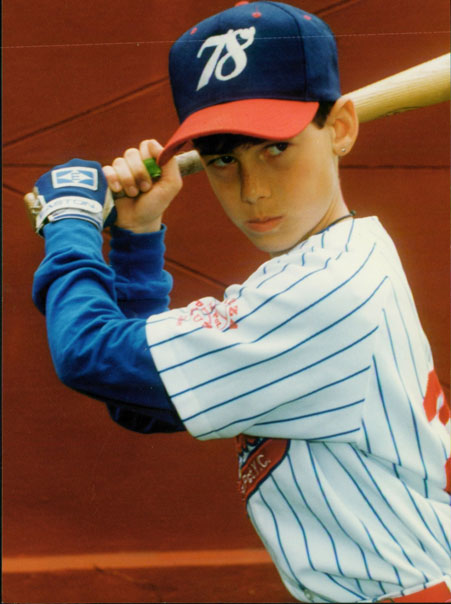
He was drafted thirtieth overall by the St. Louis Cardinals in 2006 with great expectations after putting up some crushing numbers at Northeastern University. His first start came in 2010 when he was called up from AAA Memphis Redbirds, but living out the lifelong dream was bittersweet. “I was so excited to be called up, but it was difficult because I wasn’t 100% healthy, but I wanted to step up and pitch well anyway.” Like a true gamer Adam battled through it, and after his 2012 trade to the Rockies he is set to play a bigger role out of the bullpen. “I’m definitely looking forward to more innings.”
Between spring training, AAA, and the regular season, Adam has played pretty much everywhere, and when asked how the rest of the USA stacks up to Park Slope, he jokingly blurts “They’re terrible.” “Don’t get me wrong,” he continues, “there are a lot of nice parts, but I feel like Park Slope is one of the best neighborhoods in the country. Traveling around definitely made me realize that.” He mentions Pork Slope and Fonda as some eateries he frequents when he’s back on the block, but his fondest memories were made in Prospect Park. “I’ve played on every field in the city, pretty much, but the park is special. I would play catch for hours with my Dad down there.”
The grind of the city certainly helped Adam make it to the major league mound. People hustle nonstop just to live in this city, and with only few days off in the world of professional baseball, this lesson in patience is invaluable. “I remember double, triple headers in the park after school. We were out there because we loved the game. I still love it, obviously, but it’s just different.”
Adam clearly has pride on his side. He recalls the old Sinatra lyric about “making it here” and his matter-of-fact tone makes his level of determination and hustle sound natural for a kid with a dream, but clearly that’s not the case. When I press him to name a mentor that he could credit with his success, he mentions his Dad and a few coaches, but makes it clear that it comes from within. “Coaches can be good or bad, and the facilities in other parts of the country are insane compared to here, but mainly it’s just the time that people put in with me and other kids back then. That’s what was most important to me. The time adults spent with us as kids.” You can’t play catch with yourself and you can’t make it to the Rockies without starting up a slope.

 Yoga is a complex practice. That is its beauty and its benefit. For a creature as elaborate as a human being, yoga offers a movement vocabulary to challenge and ease our bodies and a philosophy to corral our wild minds. Yet for a discipline meant to knit mind and body—yoga means union—there is one zone where yoga instruction seems to be struggling: How to guide students to use the head and neck. That is, after all, where the brain meets the body.
Yoga is a complex practice. That is its beauty and its benefit. For a creature as elaborate as a human being, yoga offers a movement vocabulary to challenge and ease our bodies and a philosophy to corral our wild minds. Yet for a discipline meant to knit mind and body—yoga means union—there is one zone where yoga instruction seems to be struggling: How to guide students to use the head and neck. That is, after all, where the brain meets the body. While sitting one night with my friend Eric, a young woman came and sat next to us. She was the next musician to play that night. Her name was Jen. She is (as I was told later by my friend) the descendent of the great American literary theorist and philosopher, Kenneth Burke, whose primary interests were rhetoric and aesthetics. She is also the daughter of the musician Harry Chapin and is a wonderful musician in her own right. Her music explores the intersection of jazz, folk and pop.
While sitting one night with my friend Eric, a young woman came and sat next to us. She was the next musician to play that night. Her name was Jen. She is (as I was told later by my friend) the descendent of the great American literary theorist and philosopher, Kenneth Burke, whose primary interests were rhetoric and aesthetics. She is also the daughter of the musician Harry Chapin and is a wonderful musician in her own right. Her music explores the intersection of jazz, folk and pop.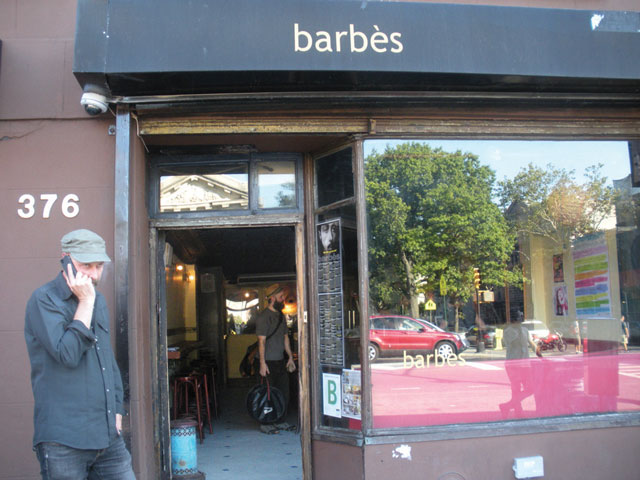 Live music constantly flows from the back room. It is a fitting complement to a nice evening; Barbès sounds as if it were a giant juke box. If you have read Ned Sublette’s Cuba and its Music you will immediately recognize the songs. Sublette’s book is premised on the idea that the impact of Cuban music on the United States is everywhere to be found. New Orleans, Sublette explains, was the port of entry for what became a unique musical relationship with Havana. The music of Barbès has, indeed, a Latin flavor even when a band called Sherita is playing a fourteenth century Sephardic/ Ladino song. Sublette’s book on Cuban music begins in Cadiz before the time of Christ—a time when the Gaditanos traded with North Africans and were bringing African musical sounds to southern Europe, called by the ancient Greeks “hispania.” Havana and New Orleans forged a unique commercial and musical relationship by the nineteenth century.
Live music constantly flows from the back room. It is a fitting complement to a nice evening; Barbès sounds as if it were a giant juke box. If you have read Ned Sublette’s Cuba and its Music you will immediately recognize the songs. Sublette’s book is premised on the idea that the impact of Cuban music on the United States is everywhere to be found. New Orleans, Sublette explains, was the port of entry for what became a unique musical relationship with Havana. The music of Barbès has, indeed, a Latin flavor even when a band called Sherita is playing a fourteenth century Sephardic/ Ladino song. Sublette’s book on Cuban music begins in Cadiz before the time of Christ—a time when the Gaditanos traded with North Africans and were bringing African musical sounds to southern Europe, called by the ancient Greeks “hispania.” Havana and New Orleans forged a unique commercial and musical relationship by the nineteenth century. Whether it be what you like to do at 3 a.m. while watching Golden Girls reruns and eating White Castle Microwaveable Cheeseburgers, or whether you consider it taboo, America’s views about marijuana are changing.
Whether it be what you like to do at 3 a.m. while watching Golden Girls reruns and eating White Castle Microwaveable Cheeseburgers, or whether you consider it taboo, America’s views about marijuana are changing.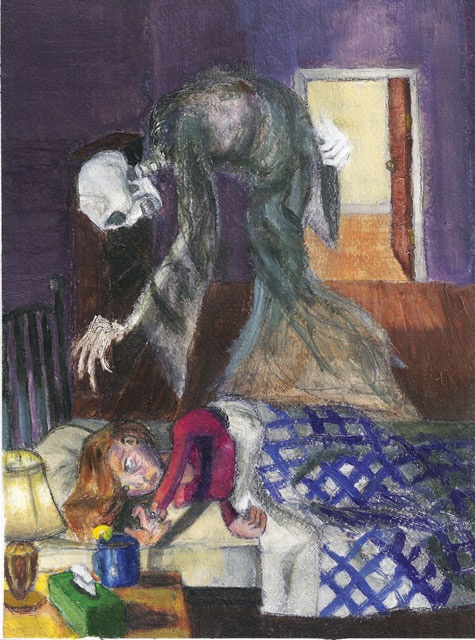 Hello Park Slopers and others.
Hello Park Slopers and others. Dear Eli, as I write this letter to you Mommy is putting you to bed. She will read to you before you go to sleep. When I came home tonight you were both finishing watching Mrs. Doubtfire on the television. Wow—bed time past 9 p.m.—how did you get that one past her?
Dear Eli, as I write this letter to you Mommy is putting you to bed. She will read to you before you go to sleep. When I came home tonight you were both finishing watching Mrs. Doubtfire on the television. Wow—bed time past 9 p.m.—how did you get that one past her?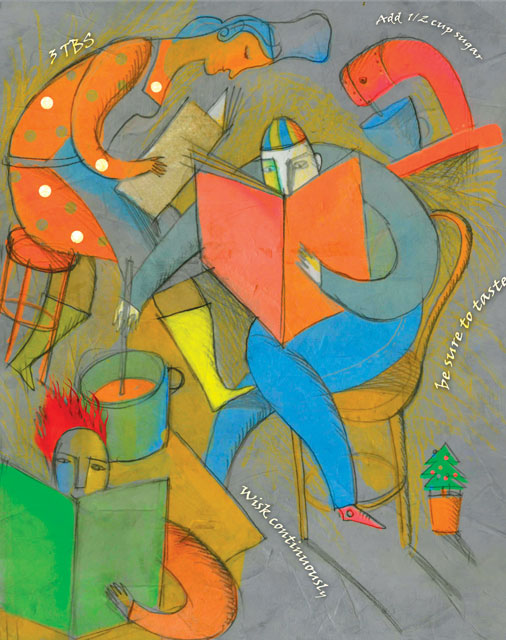 The cookbook is to food artisans as the signature fragrance is to pop stars; a rite of passage, a sign that you’ve made it. This being Brooklyn and all, there is no end to the options of ways to recreate what you love most about our markets, food trucks, shops, and restaurants in the comfort of your own (very small) kitchen. In this issue, we’ve highlighted just a few new releases for cookbooks brought to you from our borough’s best to help you with your menu planning.
The cookbook is to food artisans as the signature fragrance is to pop stars; a rite of passage, a sign that you’ve made it. This being Brooklyn and all, there is no end to the options of ways to recreate what you love most about our markets, food trucks, shops, and restaurants in the comfort of your own (very small) kitchen. In this issue, we’ve highlighted just a few new releases for cookbooks brought to you from our borough’s best to help you with your menu planning.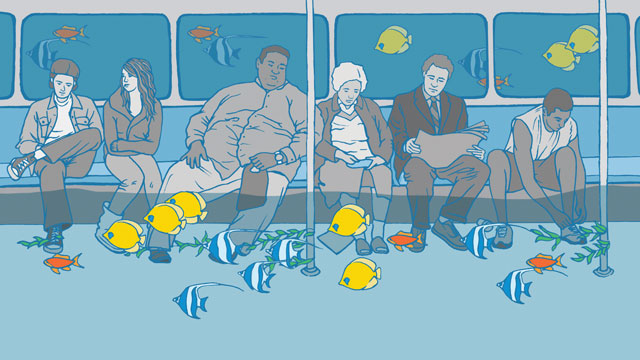 The subway is my living room. I sit next to a woman doing her makeup, wait for a train alongside a man clipping his fingernails. As we ride, ladies take off their shoes and plunge their hands toward the soles as their fingers search for that one irritating lonesome pebble or piece of lint.
The subway is my living room. I sit next to a woman doing her makeup, wait for a train alongside a man clipping his fingernails. As we ride, ladies take off their shoes and plunge their hands toward the soles as their fingers search for that one irritating lonesome pebble or piece of lint.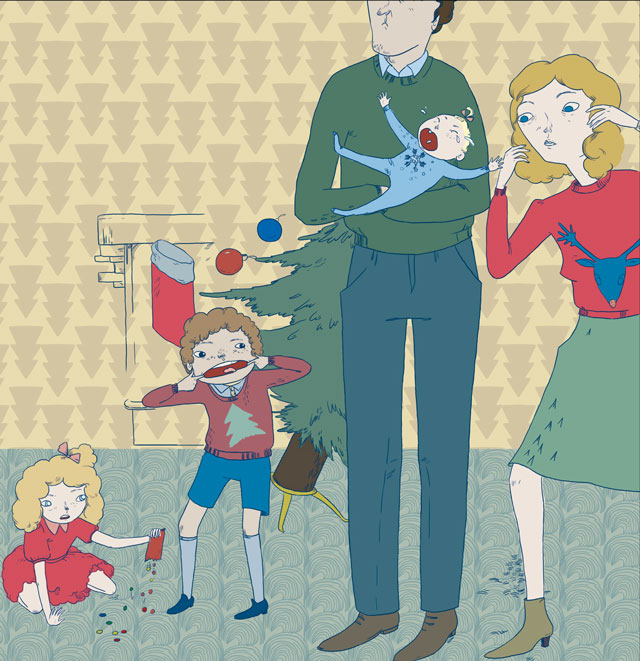 By the middle of January, I’ve packed up all the Christmas ornaments, wrestled the fake tree back into its box and tossed the leftover candy canes into the trash. Last to go are the holiday cards. As I archive our family’s card by sliding it into the file folder right in front of last year’s, I can’t help but remember the behind-the-scenes drama which went into the making of the card, a drama which is as much a tradition for our family by now as the card itself.
By the middle of January, I’ve packed up all the Christmas ornaments, wrestled the fake tree back into its box and tossed the leftover candy canes into the trash. Last to go are the holiday cards. As I archive our family’s card by sliding it into the file folder right in front of last year’s, I can’t help but remember the behind-the-scenes drama which went into the making of the card, a drama which is as much a tradition for our family by now as the card itself. Of course, I would be remiss not to mention yoga when talking about physical and mental well-being. Yoga is one those fitness trends we’ve probably all tried a few times before losing our yoga mats in the depths of our closets. But perhaps we haven’t been seeing beyond the hippie-dippy mumbo jumbo of it all.
Of course, I would be remiss not to mention yoga when talking about physical and mental well-being. Yoga is one those fitness trends we’ve probably all tried a few times before losing our yoga mats in the depths of our closets. But perhaps we haven’t been seeing beyond the hippie-dippy mumbo jumbo of it all.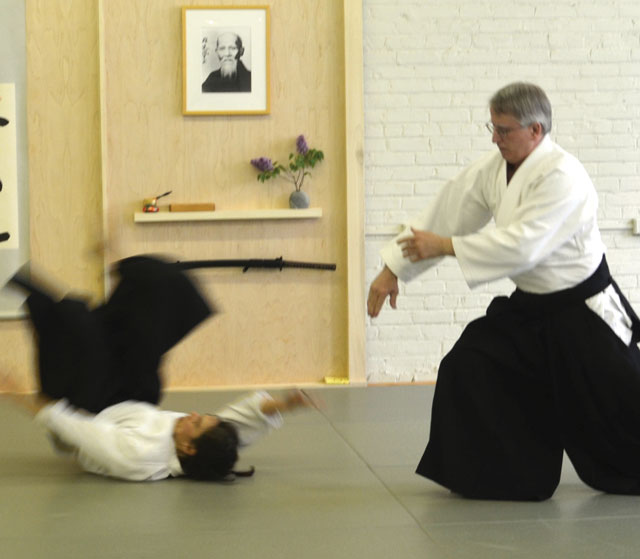 One normally doesn’t associate zen with defending oneself against an attacker, an attacker who may very well have a knife or Samurai sword, for that matter. But Sensei Stewart Johnson, head instructor and dojo cho, explains, “The goal is to develop the necessary skill, focus, awareness and compassion to control an attack without injury to your attacker or yourself. Aikido is purely defensive in nature, relying on throws, joint locks and pins rather than disabling strikes. We strive to blend with the energy of the attack, redirecting and guiding it to a throw, joint lock or pin.”
One normally doesn’t associate zen with defending oneself against an attacker, an attacker who may very well have a knife or Samurai sword, for that matter. But Sensei Stewart Johnson, head instructor and dojo cho, explains, “The goal is to develop the necessary skill, focus, awareness and compassion to control an attack without injury to your attacker or yourself. Aikido is purely defensive in nature, relying on throws, joint locks and pins rather than disabling strikes. We strive to blend with the energy of the attack, redirecting and guiding it to a throw, joint lock or pin.”